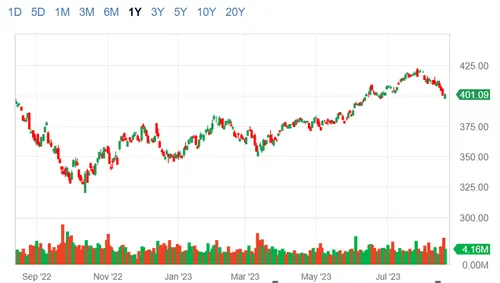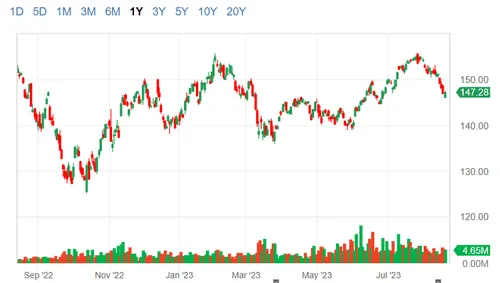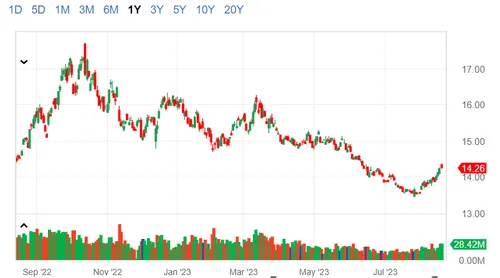Our partner, XM, lets you access a free demo account to apply your knowledge.
No hidden costs, no tricks.

If you are at all familiar with the stock market, you’ve probably heard of the S&P 500. One of the most popular stock market indexes in the world alongside the Dow Jones Industrial Average, the S&P 500 tracks the performance of the 503 most valuable stocks listed on the New York Stock Exchange (NYSE) and the Nasdaq.
Due to the popularity of the S&P 500, there are numerous ways of investing in the index, which is also considered as the benchmark for the performance of the United States stock market.
Financial investing can be a complicated affair, which is why it is so important to know what options you have before risking your capital in an investment.
For example, you can invest in the S&P 500 via a number of high-profile exchange-traded funds, or ETFs, which allocate their capital in the same proportion that the S&P 500 is weighted in to accurately track the performance of the index.
Such funds are passively managed and simply exist to replicate the performance of the underlying index.
Beginner investors are often advised to place some of their capital in index funds, as they offer stable performance and relatively low volatility, which is why millions of people invest in the S&P 500 every year.
If you are a beginner investor who would like to invest in the S&P 500 and want to explore your options - this investfox guide is for you.
Before dividing deeper into how to invest in the S&P 500, we must first clearly define and understand what the S&P 500 is and what functions it serves on the broader stock market.
The S&P 500, often referred to as just the "S&P," is a stock market index that measures the performance of 500 large publicly traded companies in the United States. It is one of the most widely followed and referenced stock market indices in the world and is considered a reliable indicator of the overall health and direction of the U.S. stock market.
The companies included in the index are carefully chosen by the Standard & Poor’s committee, which considers various factors for each stock, including market capitalization, trading volume, sector representation, and overall financial viability.
Here are a few key things to know about the S&P 500, namely that:
The S&P 500 has a long history of delivering consistent long-term growth, which makes it very attractive to investors all around the world. Many experienced investors, such as Warren Buffett, advise beginners to invest in the S&P 500 consistently to accumulate wealth in the long run.
Another method of investing in the S&P 500 is through a mutual fund. Mutual funds that track an underlying index function similarly to ETFs, however, they may come with restrictions on when investors can enter, while the fund’s managers charge annual fees to cover administrative and miscellaneous expenses.
Since S&P 500 mutual funds are passively managed, the annual fees will typically be quite low, which is attractive to a wide range of investors, especially those that are building up their retirement savings.
Investing in a mutual fund typically involves creating or redeeming shares directly with the fund company. This can sometimes lead to delays and can affect the fund's liquidity, which is an important point to consider.
Furthermore, mutual funds often have minimum investment requirements and trades are executed at the end of the day, so investors cannot take advantage of intraday price movements.
Investing in the S&P 500 is a fairly simple process. If you choose to invest through an ETF, you will need to open a stock trading account with a brokerage, find the ticker of the ETF of your choice, choose the size of the position you would like to hold, and make your investment.
After that, you can periodically monitor your investment to make sure that its returns match your expectations and investment objectives.
It is important to choose an ETF with a low expense ratio and a track record of delivering performance. You can use charting software to overlay the performance of the ETF with the actual performance of the S&P 500 to see if there have been any major discrepancies in the past.
Some leveraged ETFs, such as the Direxion Daily S&P 500 Bull ETF allow investors to double or triple their returns from an S&P 500 investment by using financial derivatives and options contracts to gain leverage.
Such investments can be considerably more risky and volatile, thanks to the nature of options contracts and short/long positions. However, more adventurous investors can find such funds a welcoming addition to their otherwise conservative portfolios.
A key advantage of leveraged S&P 500 funds is that they remove the hassle of individually picking options chains and opening long/short positions and simply provide a more outsized profit/loss potential on the same underlying index.
While choosing between different ETFs, tracking the same index may sound counterintuitive. But while these funds are near-identical in performance, where they differ are fees and dividend yields. Each fund has a different expense ratio, which is typically quite low due to the passive nature of index funds.
Regardless, a cost-conscious investor may choose the S&P 500 ETF with the lowest expense ratio and minimize expenses.
You can invest in these funds from anywhere in the world, as long as you have a valid and active brokerage account under your name.





Depending on your expectations and investment objectives, investing in the S&P 500 may have some advantages and disadvantages. It is important to carefully consider each of these factors to determine whether this is the right course of action for your goals.
Our partner, XM, lets you access a free demo account to apply your knowledge.
No hidden costs, no tricks.
Investing in the S&P 500 is a good way for investors to gain exposure to the broader U.S. market and provide a stable return from a diversified investment. Since the S&P 500 is widely regarded as a benchmark of the U.S. economy, investors that are bullish could benefit greatly from investing in it.
Apple is the biggest stock in the S&P 500 and accounts for over 7.7% of the weight of the entire index. The S&P 500 is market capitalization-weighted, which means that movements in Apple stock have more effect on the index than that of any other constituent.
The S&P 500 is one of the least volatile investments available on the stock market. The index is composed of over 500 stocks of large companies from different sectors, which greatly disperses the risk exposure of the index.